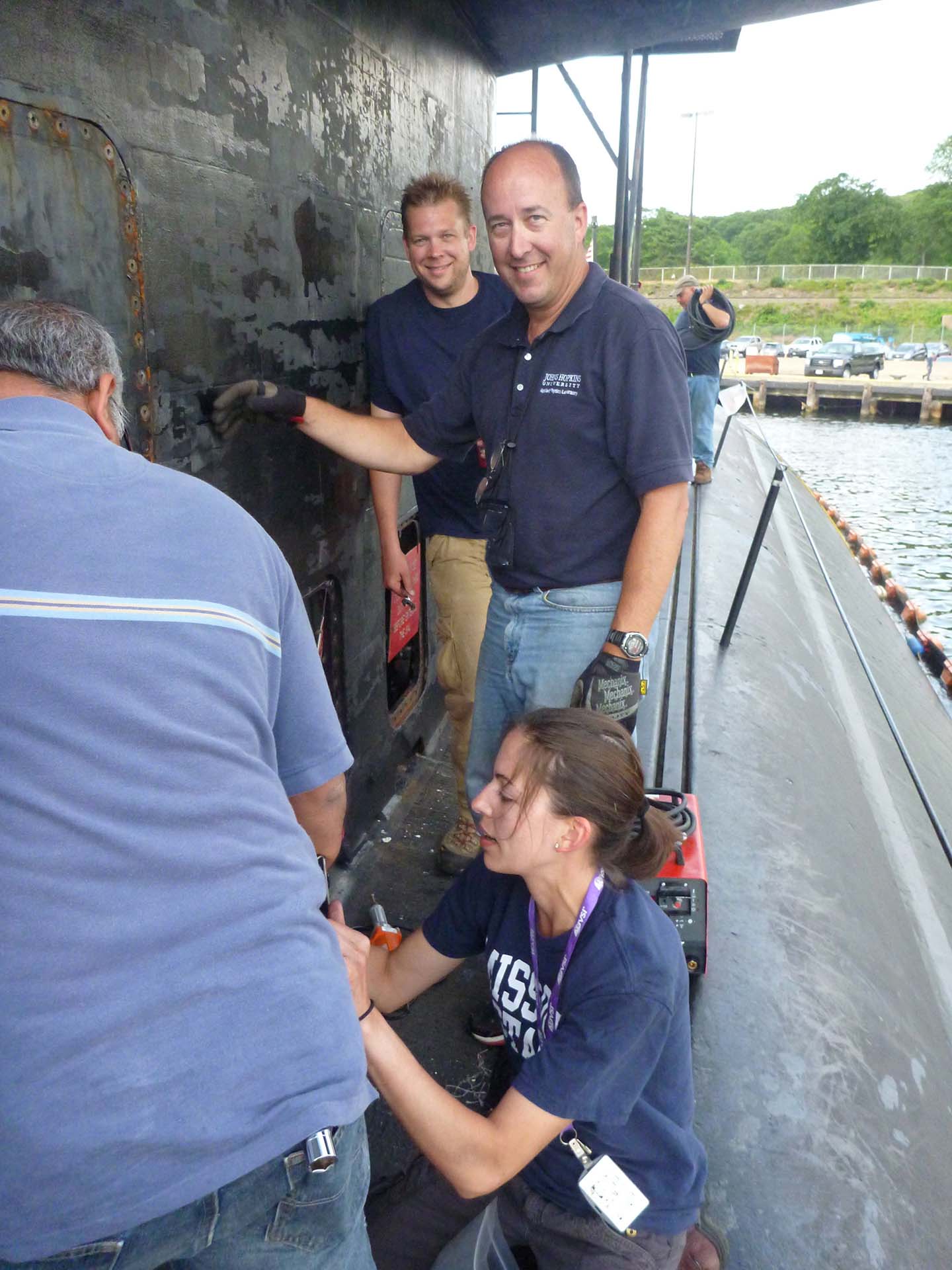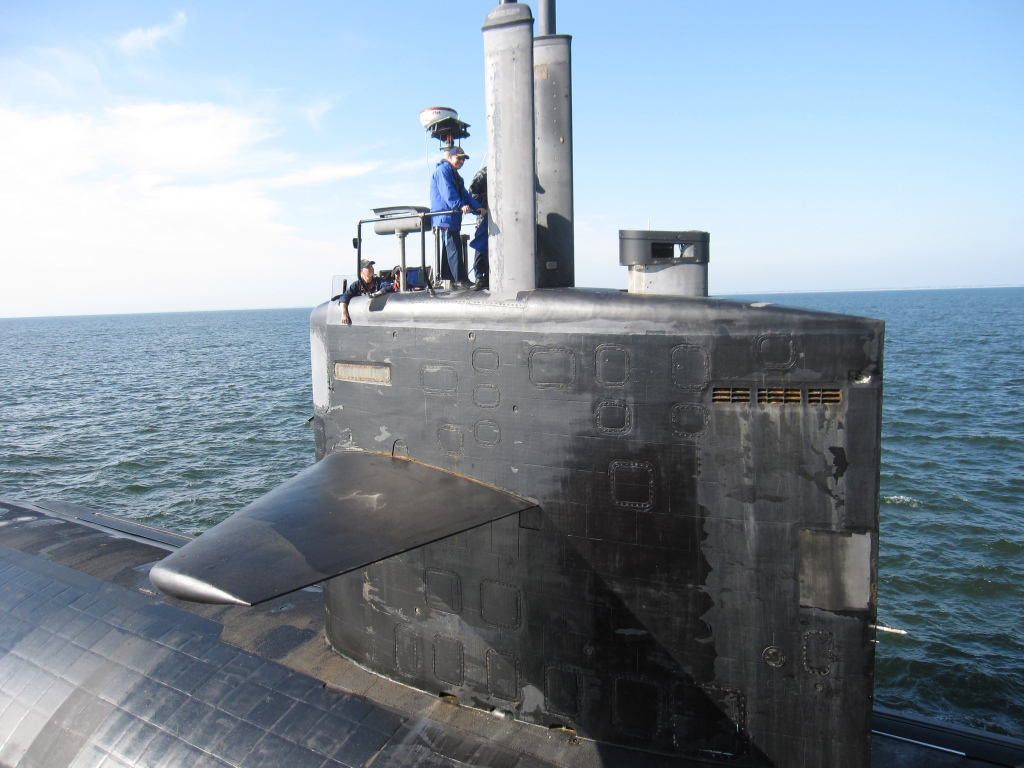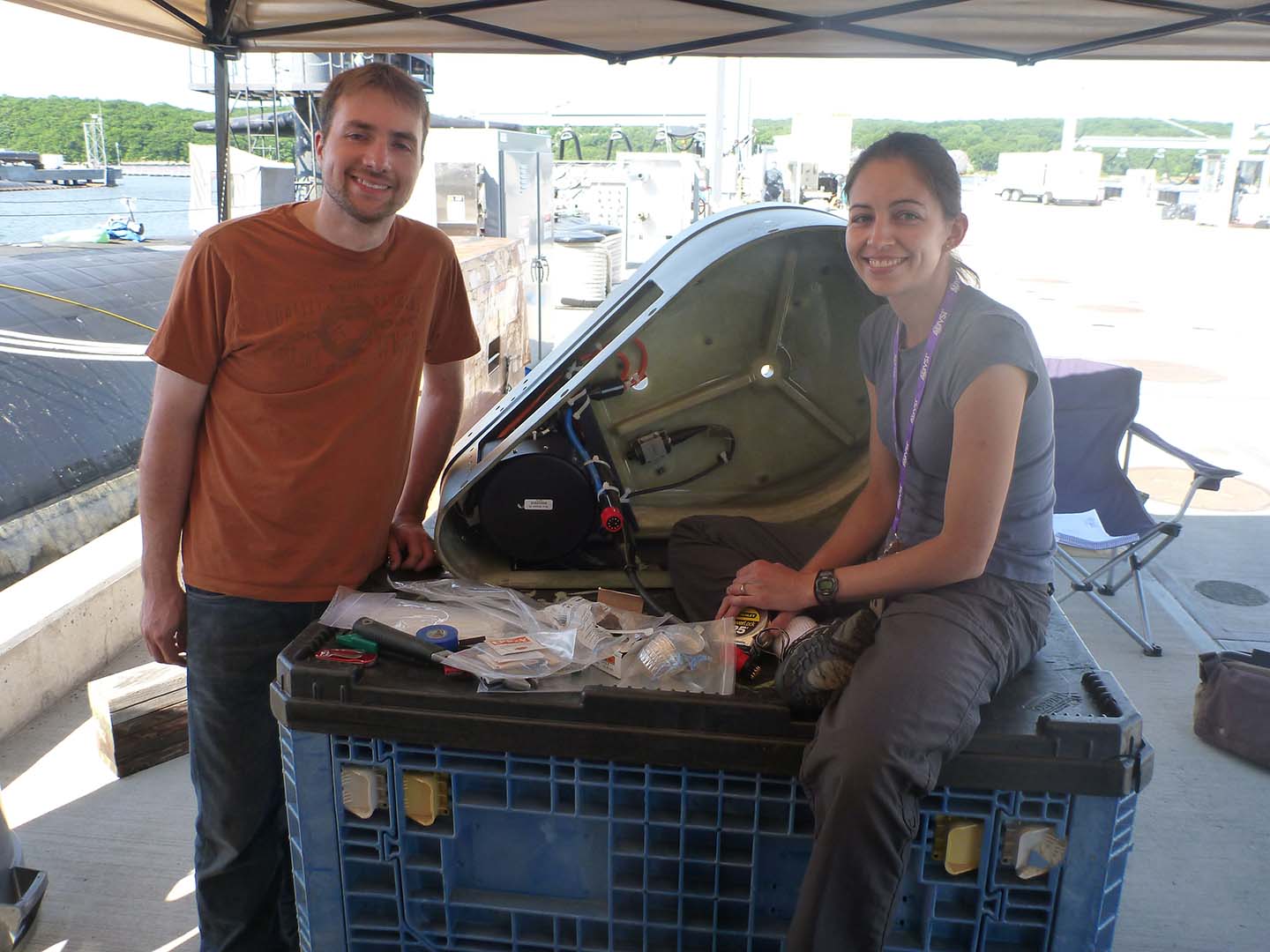
Members of the Pelagos team from the U.S. Navy and Johns Hopkins APL work on installation of one of the suite of 14 instruments onto the sail of a submarine.
Credit: JHUAPL
Press Release
New Pelagos Sensor System Improves U.S. Submarine Operations
One of the ongoing challenges facing submariners is getting information about their environmental surroundings to maximize their performance at sea. A new program called Pelagos — developed as an independent research and development project by the Sea Control Mission Area of the Johns Hopkins University Applied Physics Laboratory — provides U.S. submariners with a wide array of new data about their environment, as well as improved methods to utilize this data to make tactically relevant decisions.
Named after the Greek word for “the sea,” Pelagos is an environmental data collection system that delivers direct measurements of air and sea parameters, and employs custom algorithms to analyze the data, interpret the results, and display relevant information to the warfighters on customized screens.
The genesis of Pelagos can be traced back to a combination of similar operational goals that were presented to APL’s Force Projection Sector (FPS) by different Navy (Naval Sea Systems Command, or NAVSEA) sponsors. “The project began in 2013, when APL staff members noted that three independent sponsors with unique challenges could all benefit from a better understanding of their immediate environment,” said Sea Control’s Mike Malchiodi, lead engineer for Pelagos. “Most of what they know about their environment comes from historical databases; very little was from real-time data gathering. APL has experience with various pieces of a system like this from previous efforts, but with these new combined customer needs presented to us, it was a perfect time to bring them all together.”

